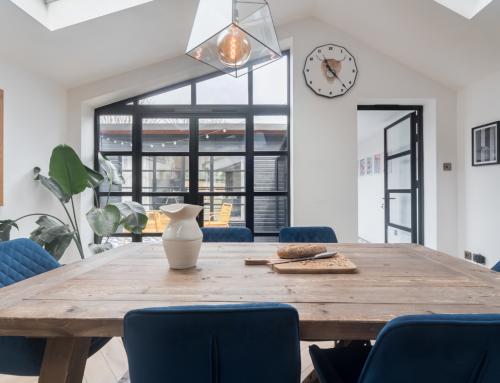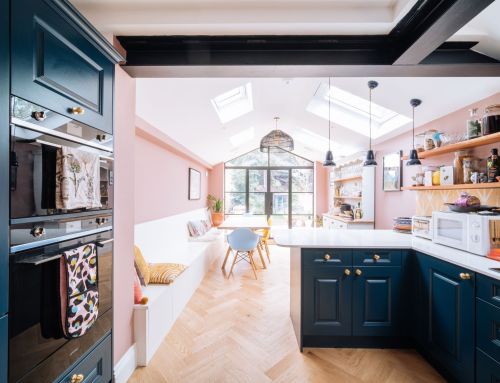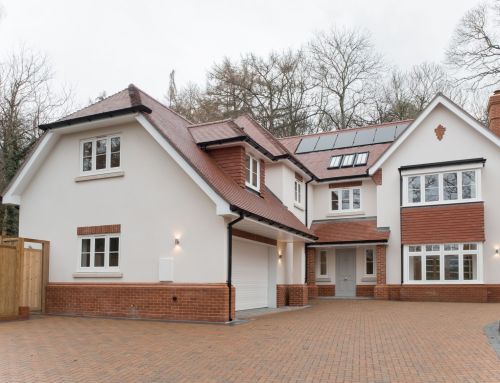One of the biggest hurdles in any building project is gaining planning consent from the local planning authority. It can be made easier by taking advantage of your permitted development rights, single storey extensions, garage conversions, loft extensions and outbuildings are more often than not applied for under a lawful development certificate or a prior building regulations approval application.
Once your consent is granted it is possible to delay the build or to make changes but it is a better idea to work with an architect or designer that can help get you consent for what you really want.
It is very easy as a designer to just draw what the client asks you for and in some cases our clients have spent months if not years planning how they want to extend their homes to use the new space.
In some cases, we will speak to the client and discuss their requirements and they are very specific on what they want. We do feel that it is important that not only do we help clients consider other options but we also make sure that what is designed can firstly be constructed and also that it can be built within a budget that the client is happy with.
In some cases it could be possible to achieve a design completely in line with the clients vision but by slightly altering the layout to reduce the complexity of the build or to reduce the amount of structural work that is required.
The two main factors for homeowners to want to make changes to a consented scheme is
1. Cost
2. Having carried out further research on what has been approved it isn’t actually what they wanted.
It can be difficult to visualise what is shown on a 2D drawing. Some people get it and others really struggle to visualise it in their mind.
This is why we offer our clients the choice of production internal and external CGIs of the designs to help them see exactly how the extensions will look.
Can I make changes to a planning permission?
It can be possible to make changes to a planning permission; it will likely incur further costs from your local authority and can delay the start of your build. Most changes to window and door sizes will be able to be revised by submitting a non-material amendment application.
If you are wanting to add additional windows, especially on upper floors or to the front of the building, the council could feel this is classed as a material change and would need to submit a new householder application or lawful development certificate.
Changes to the size or shape of an extension are likely to also be considered material as they can change the appearance of the extension or impact on neighbours so again a new application will need to be made.
With lawful development certificate it is not possible to make changes to these types of application, so it is important to ask any questions before you submit a planning application.
If you are submitting an application within 12 months of an approval and for an extension that would have a similar description then you will be able to make this second application to the council with no additional planning fees.

How long do I have to build my extension?
On the majority of planning approvals you will have 3 years to start the works, as long as you start and have building control carry out their first onsite inspection then currently there is no limit to finish your build.
Planning policy can change but as long as you work to the time frames above any changes will not affect your planning permission. However, if the approval expires resulting in you making a new application then it can be the case that what was approved originally no longer complies with the current planning policy and your application could be refused. For more information please click here.
A number of the planning authorities are currently updating their local plans with changes to environmental factors such as flooding. This can have a huge impact on single and double storey extensions as the size of the extension can be limited if your site falls within a flood zone.
If you are within a flood zone and there are restrictions on the size your extension sometimes it can be a good idea to submit under prior approval or a lawful development certificate as the requirements are far more relaxed.
What happens if my approval has expired?
It is likely that if this is the case that you will have to make a new submission to the council. In most cases this is straight forward as you already have a permission in place and if you are applying for the same extension then it is likely the council will still feel that what you are looking to do is appropriate.
As I said above this can be more difficult if the council’s planning guidelines have changed or if the flood zone your site falls within has been updated. If this is the case, you may have to scale back your extensions or apply under a different application type.
It can also work the other way; we have recently seen data from the environment agency update which has placed a property in a lower flood zone resulting in the client being able to extend their house further.
There have also been areas taken out of the green belt which previously meant the applicant only able to extend their home by 30% or having to design an extension around permitted development requirement. Being removed from the green belt meant that one of our clients was able to further extend their property and get the extension they had their heart set on.






